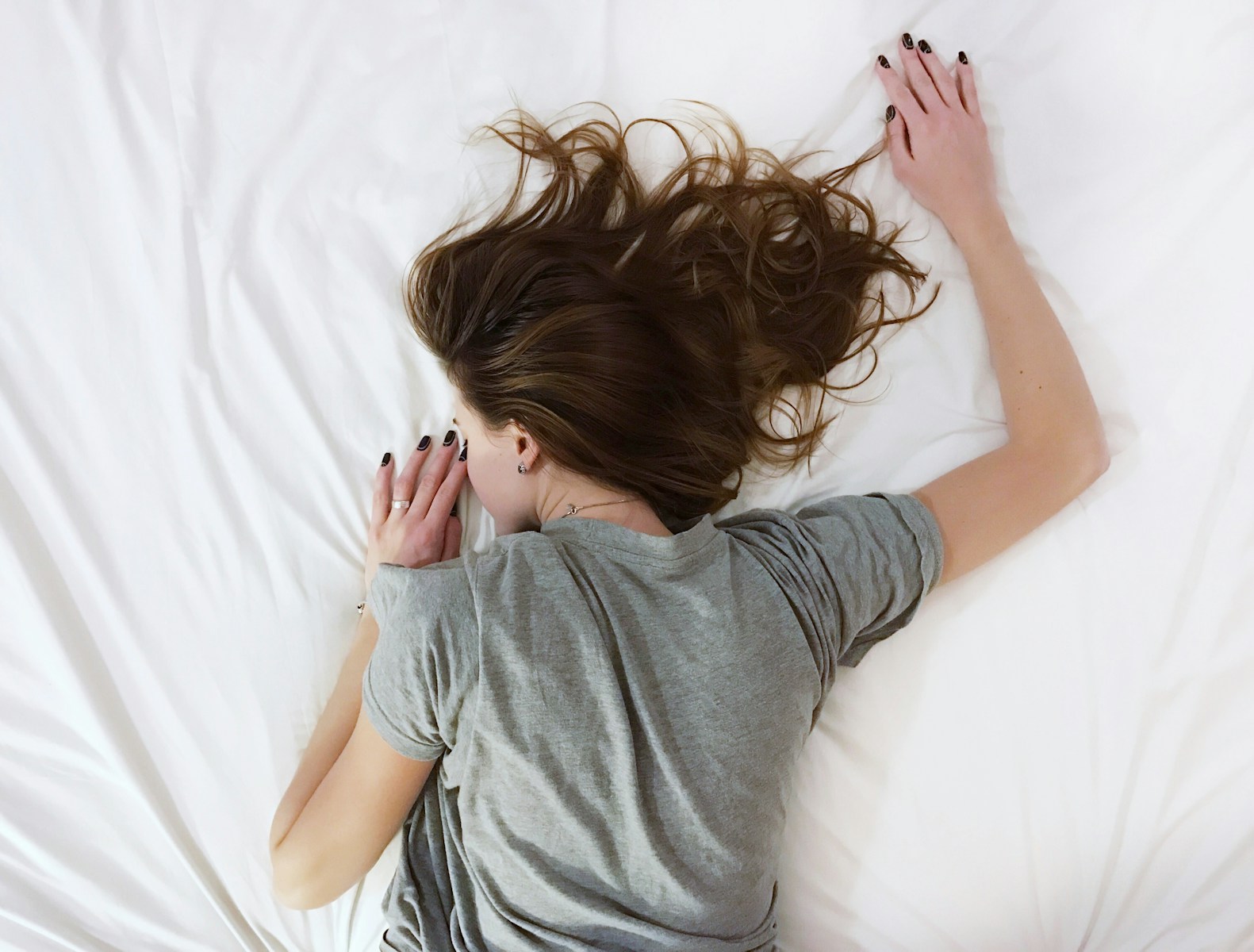Sleep efficiency is a critical aspect of overall health and well-being, often overlooked in discussions about sleep quality. It refers to the ratio of time spent asleep to the total time spent in bed. A high sleep efficiency indicates that a person is able to fall asleep quickly and stay asleep for most of the night, while a low sleep efficiency suggests frequent awakenings or prolonged periods of wakefulness.
Research has shown that sleep efficiency is closely linked to cognitive function, emotional regulation, and physical health. For instance, individuals with high sleep efficiency tend to report better mood stability and improved memory retention compared to those who struggle with sleep. Moreover, sleep efficiency can serve as an indicator of underlying health issues.
Conditions such as insomnia, sleep apnea, and restless leg syndrome can significantly disrupt sleep patterns, leading to decreased sleep efficiency. Understanding this concept is essential for anyone looking to improve their sleep quality. By focusing on enhancing sleep efficiency, individuals can not only maximize the restorative benefits of sleep but also mitigate the risks associated with chronic sleep deprivation, such as cardiovascular disease, obesity, and impaired immune function.
Key Takeaways
- Sleep efficiency is crucial for overall health and well-being
- A sleep-friendly environment can improve the quality of sleep
- Consistent sleep schedule helps regulate the body’s internal clock
- Relaxation techniques before bed can promote better sleep
- Limiting screen time, stimulants, and heavy meals before bed can improve sleep quality
Creating a Sleep-Friendly Environment
The environment in which one sleeps plays a pivotal role in determining the quality of rest one receives. A sleep-friendly environment is characterized by factors such as darkness, quietness, and a comfortable temperature. For instance, studies have shown that exposure to light can significantly hinder the production of melatonin, the hormone responsible for regulating sleep-wake cycles.
Therefore, using blackout curtains or eye masks can help create a darkened space conducive to sleep. Additionally, minimizing noise through soundproofing or using white noise machines can further enhance the sleeping experience by reducing disturbances that might interrupt the natural sleep cycle. Temperature is another crucial element in creating an optimal sleeping environment.
The ideal bedroom temperature for most individuals falls between 60 to 67 degrees Fahrenheit (15 to 19 degrees Celsius). This cooler temperature range helps facilitate the body’s natural drop in core temperature that occurs during sleep. Furthermore, investing in a comfortable mattress and pillows tailored to personal preferences can significantly impact sleep quality.
A supportive mattress that aligns the spine and alleviates pressure points can lead to deeper, more restorative sleep.
Establishing a Consistent Sleep Schedule
Establishing a consistent sleep schedule is fundamental for regulating the body’s internal clock, known as the circadian rhythm. This biological clock governs various physiological processes, including hormone release and body temperature fluctuations throughout the day. By going to bed and waking up at the same time every day, even on weekends, individuals can reinforce their circadian rhythms, making it easier to fall asleep and wake up naturally.
Research indicates that irregular sleep patterns can lead to increased feelings of fatigue and decreased cognitive performance during waking hours. In addition to promoting better sleep quality, a consistent sleep schedule can also enhance overall health. For example, studies have shown that individuals who maintain regular sleep patterns are less likely to experience mood disorders such as anxiety and depression.
Furthermore, a stable routine can improve metabolic health by regulating appetite hormones and reducing the risk of obesity. By prioritizing a consistent sleep schedule, individuals can cultivate a more balanced lifestyle that supports both mental and physical well-being.
Practicing Relaxation Techniques before Bed
| Technique | Effectiveness | Recommended Duration |
|---|---|---|
| Deep Breathing | High | 5-10 minutes |
| Progressive Muscle Relaxation | High | 10-15 minutes |
| Mindfulness Meditation | High | 10-20 minutes |
| Aromatherapy | Medium | 10-15 minutes |
Incorporating relaxation techniques into a nightly routine can significantly improve one’s ability to fall asleep and stay asleep throughout the night. Techniques such as deep breathing exercises, progressive muscle relaxation, and mindfulness meditation have been shown to reduce stress levels and promote a sense of calm before bedtime. For instance, deep breathing exercises involve inhaling deeply through the nose, holding for a few seconds, and exhaling slowly through the mouth.
This practice not only helps lower heart rate but also encourages the body to enter a state of relaxation conducive to sleep. Mindfulness meditation is another effective technique that encourages individuals to focus on the present moment without judgment. By practicing mindfulness before bed, individuals can quiet racing thoughts and alleviate anxiety that may interfere with their ability to fall asleep.
Research has demonstrated that regular mindfulness practice can lead to improved sleep quality and reduced insomnia symptoms. By dedicating time each evening to these relaxation techniques, individuals can create a peaceful transition from the busyness of the day to the tranquility of night.
Limiting Screen Time before Bed
In today’s digital age, screen time has become an integral part of daily life; however, excessive exposure to screens before bedtime can have detrimental effects on sleep quality. The blue light emitted by smartphones, tablets, and computers interferes with melatonin production, making it more challenging for individuals to fall asleep. Studies have shown that individuals who engage in screen time within an hour of bedtime report longer sleep onset times and poorer overall sleep quality compared to those who limit their exposure.
To mitigate these effects, experts recommend establishing a “digital curfew” by turning off electronic devices at least one hour before bedtime. Instead of scrolling through social media or watching television, individuals can engage in alternative activities that promote relaxation and prepare the mind for sleep. Reading a physical book, practicing gentle yoga stretches, or engaging in creative hobbies such as drawing or journaling can serve as effective substitutes for screen time while fostering a calming atmosphere conducive to restful sleep.
Avoiding Stimulants and Heavy Meals before Bed
The consumption of stimulants such as caffeine and nicotine can significantly disrupt sleep patterns if ingested too close to bedtime. Caffeine, found in coffee, tea, chocolate, and many soft drinks, is known for its stimulating effects on the central nervous system. Research indicates that consuming caffeine even six hours before bedtime can negatively impact sleep quality by prolonging wakefulness and reducing total sleep time.
Similarly, nicotine is a stimulant that can lead to increased heart rate and heightened alertness, making it difficult for individuals to unwind at night. In addition to avoiding stimulants, it is also advisable to steer clear of heavy meals close to bedtime. Eating large or rich meals can lead to discomfort and indigestion during the night, hindering one’s ability to achieve restful sleep.
Instead, individuals should aim for lighter snacks if they feel hungry before bed—options such as yogurt or a small piece of fruit can provide nourishment without overwhelming the digestive system. By being mindful of food and drink choices in the hours leading up to bedtime, individuals can create an environment more conducive to restorative sleep.
Incorporating Regular Exercise into Your Routine
Regular physical activity is widely recognized for its numerous health benefits, including its positive impact on sleep quality. Engaging in exercise helps regulate circadian rhythms and promotes deeper stages of sleep by increasing total sleep time and enhancing overall sleep efficiency. Studies have shown that individuals who participate in moderate aerobic exercise—such as brisk walking or cycling—report improved sleep quality compared to those who lead sedentary lifestyles.
However, timing is crucial when it comes to exercise and its effects on sleep. While morning or early afternoon workouts can energize individuals throughout the day and promote better nighttime rest, exercising too close to bedtime may have the opposite effect for some people. High-intensity workouts can elevate heart rate and adrenaline levels, making it difficult for the body to wind down before bed.
Therefore, finding an exercise routine that fits one’s lifestyle while allowing sufficient time for recovery before bedtime is essential for maximizing the benefits of physical activity on sleep.
Seeking Professional Help if Sleep Troubles Persist
Despite implementing various strategies aimed at improving sleep quality, some individuals may still struggle with persistent sleep issues that warrant professional intervention. Conditions such as chronic insomnia or obstructive sleep apnea require specialized assessment and treatment from healthcare providers trained in sleep medicine. These professionals can conduct comprehensive evaluations that may include overnight polysomnography or home-based sleep studies to diagnose underlying disorders accurately.
In addition to medical evaluations, cognitive-behavioral therapy for insomnia (CBT-I) has emerged as an effective treatment option for those experiencing chronic sleep difficulties. CBT-I focuses on identifying and changing negative thought patterns related to sleep while teaching practical skills for improving sleep hygiene and establishing healthier habits. By seeking professional help when necessary, individuals can address persistent sleep troubles effectively and work towards achieving restful nights and rejuvenated days.





